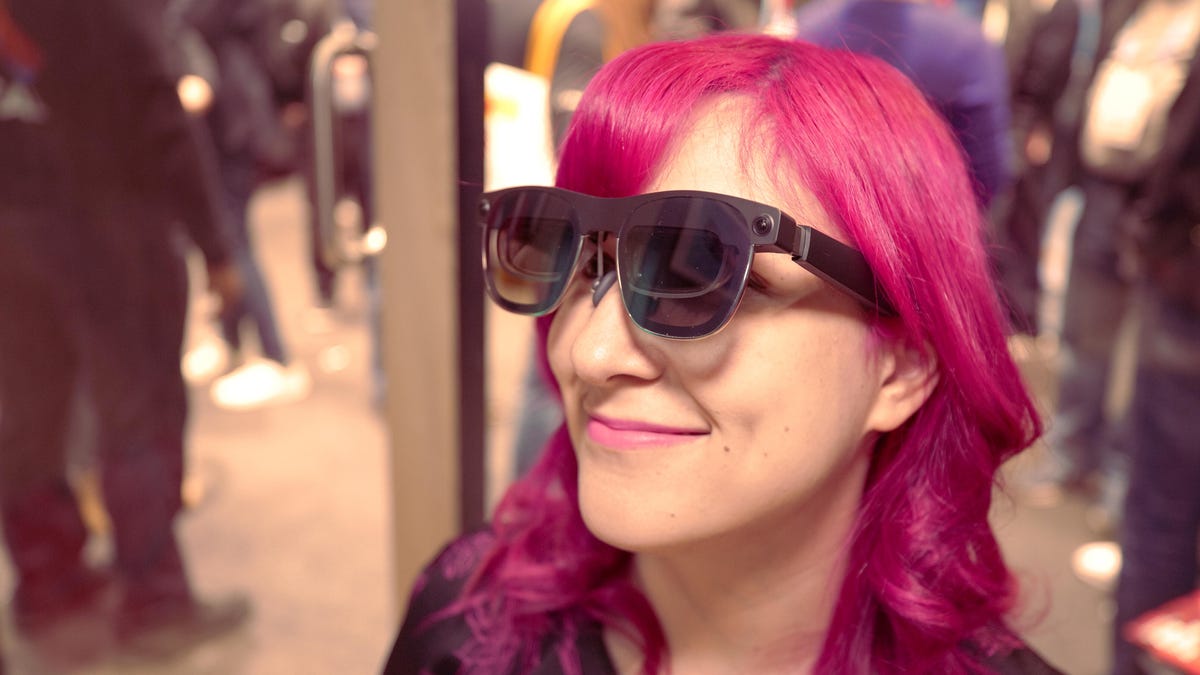
A computer desktop showing a work-related project is displayed on a giant virtual screen right before my eyes. But as I turn to the left, my gaze switched to a music player showing the most recent song, while to my right was YouTube. All of these virtual screens stayed anchored in place as I looked around the room.
I was trying out the Xreal Air 2 Ultra at CES 2024, the newest pair of smart glasses from China-based tech startup Xreal. The company is no stranger to the world of smart glasses; they already sell augmented reality glasses that place a giant virtual screen in front of your eyes, and wearable display glasses that work with handheld game consoles, phones and computers. And back when they were called Nreal, the company released a similar pair of lightweight AR glasses called the Nreal Light.
Watch this: Check Out These Smart Glasses That Put Screens All Around You
But the XReal Air 2 Ultra, which costs $699 and launches in March, arrives as mixed reality is having a moment. Apple just announced availability for the Vision Pro, a $3,500 headset it announced last June. Samsung, Google and Qualcomm are also partnering on a mixed reality project, although they haven’t disclosed many details beyond the chipset. The Air 2 Ultra is a pair of glasses that Xreal hopes will rival Apple’s Vision Pro, but its success will depend on the types of apps developers create. That’s likely why the company is positioning the glasses as a developer model. Xreal’s one of several companies, including TCL and Lenovo, trying to make AR glasses work better with phones and other devices. Qualcomm has been a driving force for glasses like these, but Google has still been quiet on expanding AR glasses support for Android phones (although Samsung and Google’s headset could be the start of something).
“Applications [would] need to go from 2D to 3D; we need to go from this rectangle to everywhere,” Chi Xu, CEO and founder of Xreal, said while gesturing towards a smartphone. “It definitely takes some time.”
The Xreal Air 2 Ultra looks like a slightly bulkier pair of regular glasses and weighs roughly 0.2 pounds. They feel lightweight and comfortable to wear, although I only had the chance to try them for a few minutes. They support full motion tracking (six degrees of freedom, or 6DoF), which means they can tell whether you’re moving around in a space. Full HD resolution is supported in each eye with a 52-degree field-of-view. When viewing 2D content, the screen is an equivalent of looking at a 154-inch display from a distance of 13 inches.
The Xreal Air 2 Ultra
The $699 Xreal Air 2 Ultra glasses are far cheaper than the $3,500 Apple Vision Pro and $1,000 Meta Quest Pro. But unlike those devices, Xreal’s new glasses aren’t standalone: they must be tethered to another device in order to work. The benefit is that Xreal’s glasses are noticeably smaller and more natural-looking than other headsets, but the downside is that it can’t operate as a standalone device. Xu thinks a self-contained wearable computer that looks like a pair of glasses could be possible in about five years.
I was impressed by the sharpness and clarity of the Xreal Air 2 Ultra’s displays. During the brief time I spent with the glasses, I watched clips from Life of Pi, Despicable Me 2 and Avatar, and it almost felt like watching TV. You can interact with the various screens and menus being viewed through the glasses by pinching your thumb and index finger together, similar to the Double Tap feature on the Apple Watch Series 9. It was surprisingly responsive; I barely had to pinch my fingers together more than once to switch movies or make other selections.
The Xreal Air 2 Ultra
Xreal’s demo had some interesting examples of what app creators could do with the technology. For example, a messaging app had 3D artwork representing the content of the message displayed alongside the text. Tapping (sorry, I mean pinching) a person’s name and image on the contacts page prompted them to appear as a 3D avatar. But the success of advanced glasses like these depends on apps that are developed for them. Right now, there aren’t many AR glasses-ready apps available on phones. That could change in the future if Google – and maybe Apple – start supporting more devices with their own app ecosystems, but it also holds glasses like Xreal’s back in the meantime for anything more than being a way to extend multiple displays.
I haven’t tried Apple’s Vision Pro, so I can’t say how the Xreal Air 2 Ultra compares. But Xu takes the fact that industry giants like Apple, Samsung and Google are showing interest in this space as a promising sign.
“I’m very excited about those companies going in this direction,” he said. “It’s actually disappointing if they don’t pay attention to this.”
